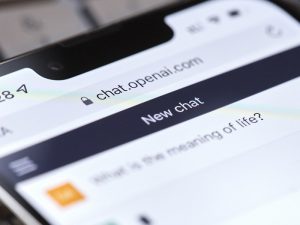Top 10 Google Glass myths debunked (by Google)
![]() Growing up, you probably heard about some pretty strange myths, like eating Pop Rocks and drinking Coke causing your stomach to explode. Some kids were scared to mix the two for fear of erupting tummies, but some brave souls tried it and busted the myth. Turns out, the carbon dioxide in Pop Rocks is not enough to cause an explosion, even when mixed with soda.
Growing up, you probably heard about some pretty strange myths, like eating Pop Rocks and drinking Coke causing your stomach to explode. Some kids were scared to mix the two for fear of erupting tummies, but some brave souls tried it and busted the myth. Turns out, the carbon dioxide in Pop Rocks is not enough to cause an explosion, even when mixed with soda.
Though the myth has been busted, you can still hear its tale being passed on in playgrounds around the world. This myth has been around since 1979 and though General Foods, the maker of Pop Rocks, debunked the myth, believers still insist it’s true.
At present, a tech company is plagued by myths about one of its products, and decided that despite the extra attention, potential buyers may start to believe these myths.
The company I’m referring to is Google and the product, if you haven’t guessed it, is Google Glass.
In its Google+ page, the Glass team published the Top 10 Google Glass Myths, for the sole purpose of busting the untruths.
Top 10 Google Glass Myths debunked (by Google)
.
Google Glass scenarios. Photo: Google Glass
.
Myth 1 – Glass is the ultimate distraction from the real world
Google explains that since the information is right in front of your eyes, people won’t have to stoop down, unlike when someone is using a tablet or smartphone. Because the information is right in front of your eyes, you don’t have to detach yourself from the rest of the world.
Myth 2: Glass is always on and recording everything
The Glass screen is off by default, just like any gadget you have ever owned. You control when you want it turned on or off. Video recording on Glass is set to last 10 seconds, but users can record longer videos (though this would mean less battery life for the device, as Glass is not meant for always-on recording). Explorers are unlikely to use up all the Glass’ battery just to record random people, so before you ask an Explorer if he’s recording you, ask yourself if you would be doing the same if you own Glass.
Myth 3 – Glass Explorers are technology-worshipping geeks
Tech-geeks aren’t the only ones enjoying the use of Glass. If you have been following Glass news, you’ll know that people from different sectors such as parents, firefighters, zookeepers, brewmasters, film students, reporters, and doctors, are part of the Explorer program. This myriad of users see the potential of Glass for use in their respective fields, as it helps them engage more with the world, and not serve as a distraction. Most people are constantly looking down at their smartphone or tablet that they often miss everything happening around them. When was the last time you sat down at a coffee shop and just looked at the people passing by, took in your surroundings, or just appreciated an afternoon of lovely weather?
photo courtesy of Google Glass
Myth 4 – Glass is ready for prime time
Glass is a prototype and Google knows that people are making fun of how it looks. Some may like Glass’ style, but it’s doubtful most people would like to wear the digitized spectacles 24/7. Nevertheless, explorers and consumers in general play a critical role in the development of Glass. Google has released software and hardware updates for Glass, and sealed partnerships with eyewear companies to ready Glass for primetime. Right now, Glass is not yet ready for commercial release.
Myth 5: Glass does facial recognition (and other dodgy things)
Google has banned face recognition apps in the MyGlass app store, as it doesn’t want people to use the device to invade people’s privacy. Google is not saying facial recognition will not come to Glass, but until it could properly address the many issues raised by that kind of feature, it will not be made available to Explorers. There are face-rec apps already made for Glass, but Google pointed out that their existence doesn’t mean that they will be made available in MyGlass.
Myth 6: Glass covers your eye(s)
The Glass’ display is strategically placed above the right eye, which means it is not obstructing a person’s line of sight. Google designed it in such a way because the company knows that it is important for people to make eye contact when speaking with others and see the world. It is not placed directly in front of your eye, but above it so information is easily seen when you need it.
Myth 7 – Glass is the perfect surveillance device
The current iteration of Glass is not the perfect spyware gadget because people immediately notice if someone is wearing Glass. Google pointed out that the display screen lights up when you give a command or press a button so people would know if the device is active, but as reported earlier, there’s an app able to take photos every 10 seconds even when the Glass display is turned off. Though the Malnote app for incremental photo-snapping is not something Explorers can download at the MyGlass store, the fact remains that Glass can be turned into a spyware by side-loading the app to Glass.
photo courtesy of Google Glass
Myth 8 – Glass is only for those privileged enough to afford it
Yes, Glass is quite expensive at $1500 but this is still a prototype and the cost could go lower when it hits stores. Not all Explorers are well-off, as some of them were provided with Glass by their company, given as a gift, or raised money from crowdfunding sites.
Myth 9 – Glass is banned… EVERYWHERE
It is not banned everywhere, but some establishments have prohibited people from wearing Glass on premise. Others have asked Glass-wearing patrons to turn off the device while inside, while some have booted Explorers just for wearing them. Establishments should note that some Explorers use prescription glasses with Glass, so instead of yanking off the device from people’s faces, they should first ask to turn the device off, and ask the Explorer to show them that the device is indeed turned off.
Myth 10 – Glass marks the end of privacy
In the 19th century, when the camera hit the consumer market, some were quick to say that it marked the end of privacy. Cameras were banned in parks, national monuments and other places, but lo and behold, cameras are still in existence today and there are now more cameras out in the wild, not to mention the millions of mobile devices being used by people.
Glass isn’t the only thing that can be used to spy on people, as mobile devices can also do that, even lifelogging cameras. People’s affinity to documenting every aspect of their lives helped cameras stand the test of time. But Glass is more than a camera and society will eventually need to look past the fact that it has a camera and realize that it offers more than just taking photos and videos if Glass is expected to stand the test of time.
A message from John Furrier, co-founder of SiliconANGLE:
Your vote of support is important to us and it helps us keep the content FREE.
One click below supports our mission to provide free, deep, and relevant content.
Join our community on YouTube
Join the community that includes more than 15,000 #CubeAlumni experts, including Amazon.com CEO Andy Jassy, Dell Technologies founder and CEO Michael Dell, Intel CEO Pat Gelsinger, and many more luminaries and experts.
THANK YOU













